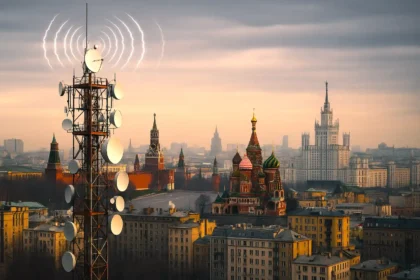A Cold War Echo Still On Air
The UVB‑76 radio, also known as “The Buzzer,” has been transmitting a repetitive buzzing sound on 4625 kHz since the late 1970s. Almost unchanged for decades, this enigmatic signal — occasionally interrupted by cryptic voice messages in Russian — remains on air to this day, with no official explanation.
What might have been just another obscure frequency has become one of the greatest mysteries in radio history. Several theories have emerged: is it a military standby station? A secret spy channel? Or perhaps even part of an automatic nuclear retaliation system?
In this post, you’ll discover what is known (and still speculated) about UVB‑76 radio. You’ll also learn how to listen live and, most importantly, why it continues to fascinate listeners, conspiracy theorists, and researchers around the world.
You might also like:
What Is UVB‑76 Radio?

Frequency and Signal
UVB‑76 operates on 4625 kHz, within the shortwave band. It uses AM mode with a slightly suppressed carrier. Its iconic signal: a buzzing tone lasting about 1 second, followed by 1 second of silence — repeating continuously, minute after minute.
The Buzzing
This tone is dubbed “the buzzer” because it sounds like a constant alarm or warning. Historical records suggest the original pattern began sometime between 1977 and 1982. Since then, the signal has remained active to the present day.
UVB‑76 Timeline

Image: Orthodox Church of St. Seraphim of Sarov, in Alabushevo — near the decommissioned Povarovo military base linked to UVB-76. Photo by Andrew Butko, via Wikimedia Commons (CC BY-SA 3.0)
1970s to 2000s
No official authority has ever publicly claimed responsibility for UVB‑76. The earliest known recording dates back to 1982, but listener reports suggest it was active since the late 1970s. Until 2010, the station’s call sign was UVB‑76 — a name that stuck.
Post-2010 Changes
In 2010, the station unexpectedly went silent for several days. Shortly after, a new voice transmission identified the call sign MDZhB, marking a shift to a more active and unpredictable phase. It’s believed the transmitter was moved from the Povarovo military base (near Moscow) to another site near St. Petersburg.
Recent Events
Since then, numerous coded messages and number sequences have been recorded. In 2025, the volume of transmissions spiked, with peaks of activity in March and April.
Theories About UVB‑76’s Purpose

Image: AI-generated illustration of shortwave signal propagation through the ionosphere, similar to UVB‑76 operations.
1. Military Standby Channel
The most accepted theory is that UVB‑76 radio serves as a military channel marker. The continuous buzzing keeps the 4625 kHz frequency occupied, preventing other users from taking over the channel.
This buzzing would indicate the channel is reserved for strategic purposes and ready for immediate use — especially in case of war or emergencies. In this case, the tone itself carries no information but signals that the channel is on standby, a common practice in military communications.
2. Nuclear Retaliation System
Another theory connects UVB‑76 to the so-called “Dead Hand” — a rumored Soviet-era automated nuclear retaliation system. The central idea was to ensure that, even if command centers were destroyed in a first strike, Soviet missiles would still launch.
In this context, UVB‑76 would act as a “heartbeat” signal, indicating the Russian command system is alive and functioning. If the signal were to stop suddenly, it could be interpreted as a collapse of central command — automatically triggering a pre-programmed nuclear response.
Although there is no direct evidence of this link, the station’s mysterious and military-like behavior keeps this hypothesis alive.
3. Ionospheric Testing
Some researchers believe the signal is used to measure wave propagation in the ionosphere, aiding long-range military communication.
4. Spy Station
Others suggest UVB‑76 is a numbers station, transmitting coded messages to secret agents. However, its pattern is far less regular than typical numbers stations.
Notable Voice Transmissions
What truly sets UVB‑76 radio apart are the rare moments when it interrupts the buzzing to broadcast voice messages.
These transmissions are typically in Russian, spoken by different voices, and follow a cryptic format like:
“NAIMINA 74 14 35 74”
Some of the most famous transmissions include:
- December 24, 2010 – The above message was among the first after the new call sign announcement.
- April 15, 2025 – Four code words were aired in less than 24 hours: Neptune, Thymus, Foxcloak, Nootabu.
- June 30, 2025 – A new sequence of numbers was broadcast live, sparking strong reactions online.
How to Listen to UVB‑76 Live

Image: Illustration of a woman tuning in to UVB‑76 on an old radio in a rustic setting.
Even without radio equipment, anyone can listen to UVB‑76 radio live:
Option 1: WebSDR (via browser)
- Visit: WebSDR from the University of Twente
- Tune to 4625 kHz, AM mode
- Wait for the buzz — or if you’re lucky, a voice message
Option 2: Shortwave Radio
Alternatively, if you own a portable SDR radio and a good antenna, you can pick up the signal directly. Reception is generally better at night due to stronger shortwave propagation.
UVB‑76 in Pop Culture
The mystery of UVB‑76 radio has inspired several pop culture references:
- Call of Duty: Black Ops – The buzzing sound features as ambient audio in Zombies mode.
- Stalker (game) – Players reported hearing the buzzing when interacting with radios.
- Rise of the Tomb Raider – Includes references to the station’s signature tone.
- The Prodigy – Released a track titled “UVB‑76.”
- Mods and Online Videos – Fan-made content includes bots, gaming mods, and viral TikToks based on the station.
Conclusion
UVB‑76 radio is a reminder that, even in the age of internet and artificial intelligence, some mysteries remain unsolved. At first glance, its constant buzzing may seem mundane — yet it carries decades of speculation, and possibly encrypted information we may never fully understand.
If you’ve heard of the station before, share your thoughts in the comments.
If not, it’s worth listening for yourself. Who knows — maybe you’ll witness the next mysterious broadcast.
Main References
- Priyom.org – The Buzzer (UVB‑76):
A detailed archive of recordings, logs, and expert analysis maintained by enthusiasts and radio amateurs. - Wikipedia (em inglês) – UVB‑76:
A well-referenced page with a timeline, technical data, and recent events related to the station.
Posts Recomendados
Carregando recomendações...



